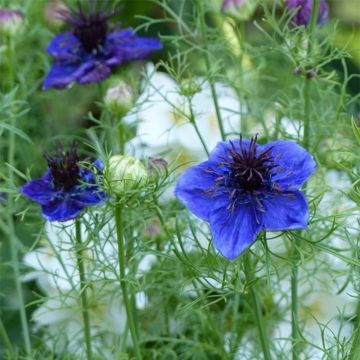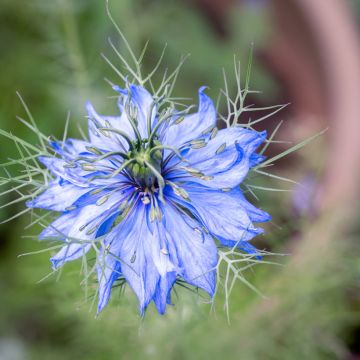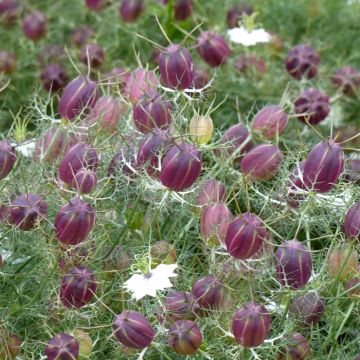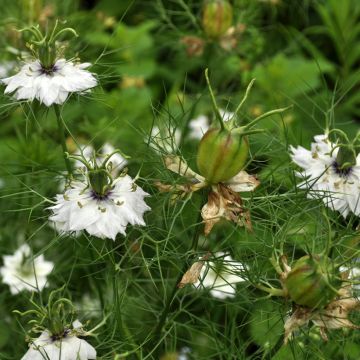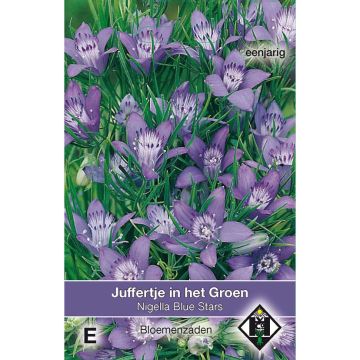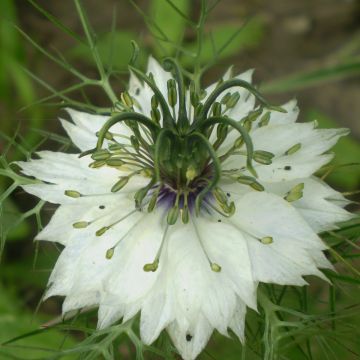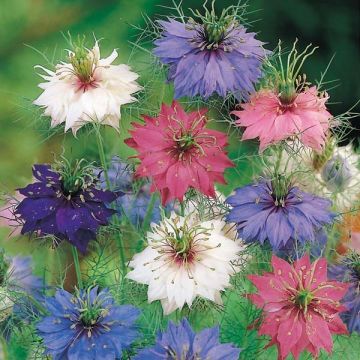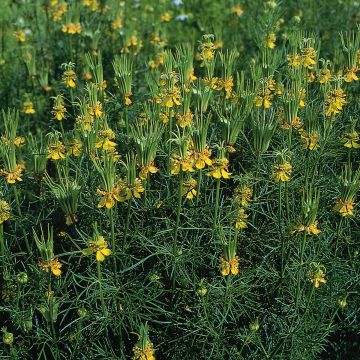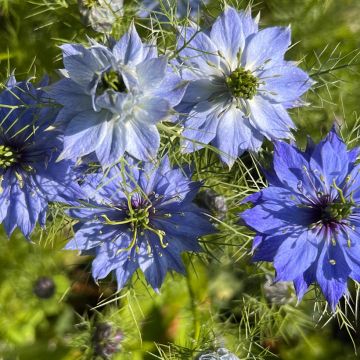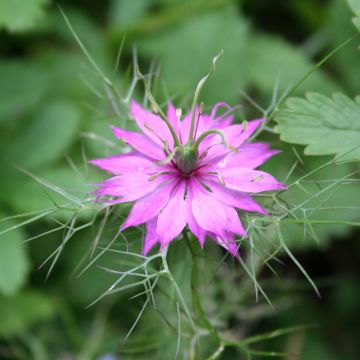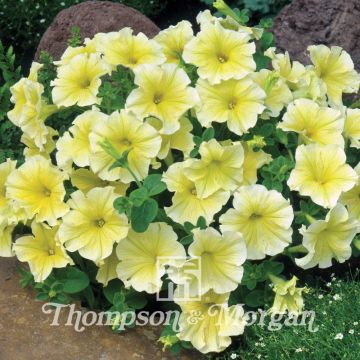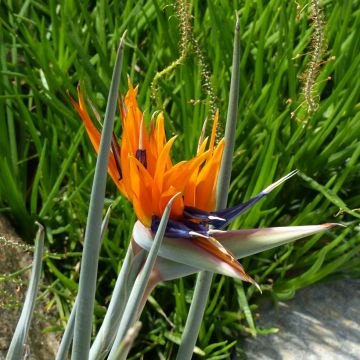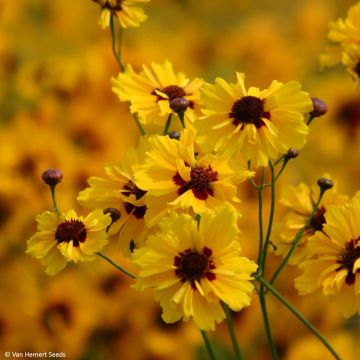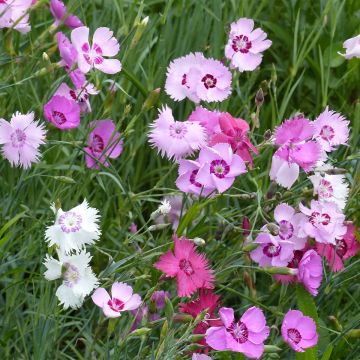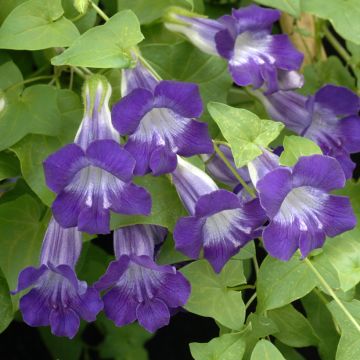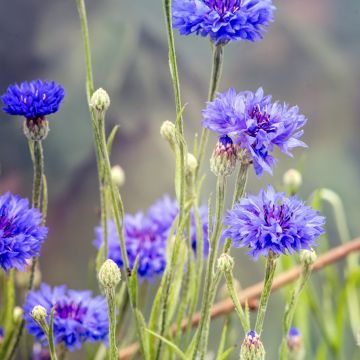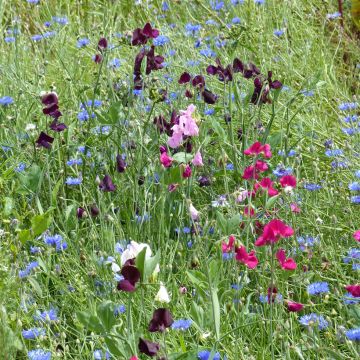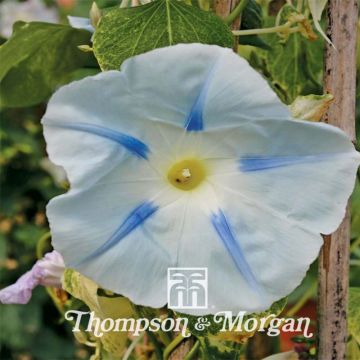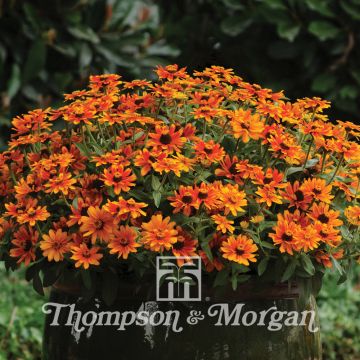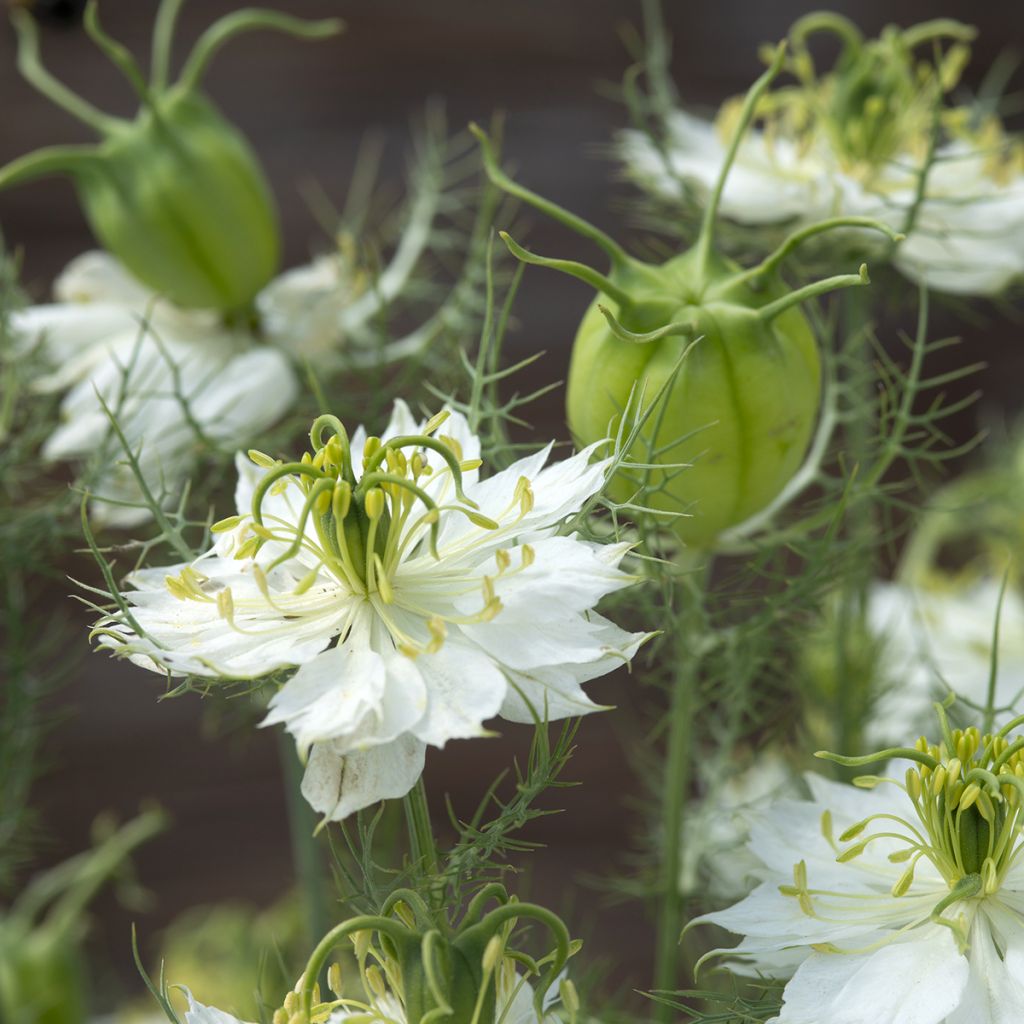

Nigella damascena White
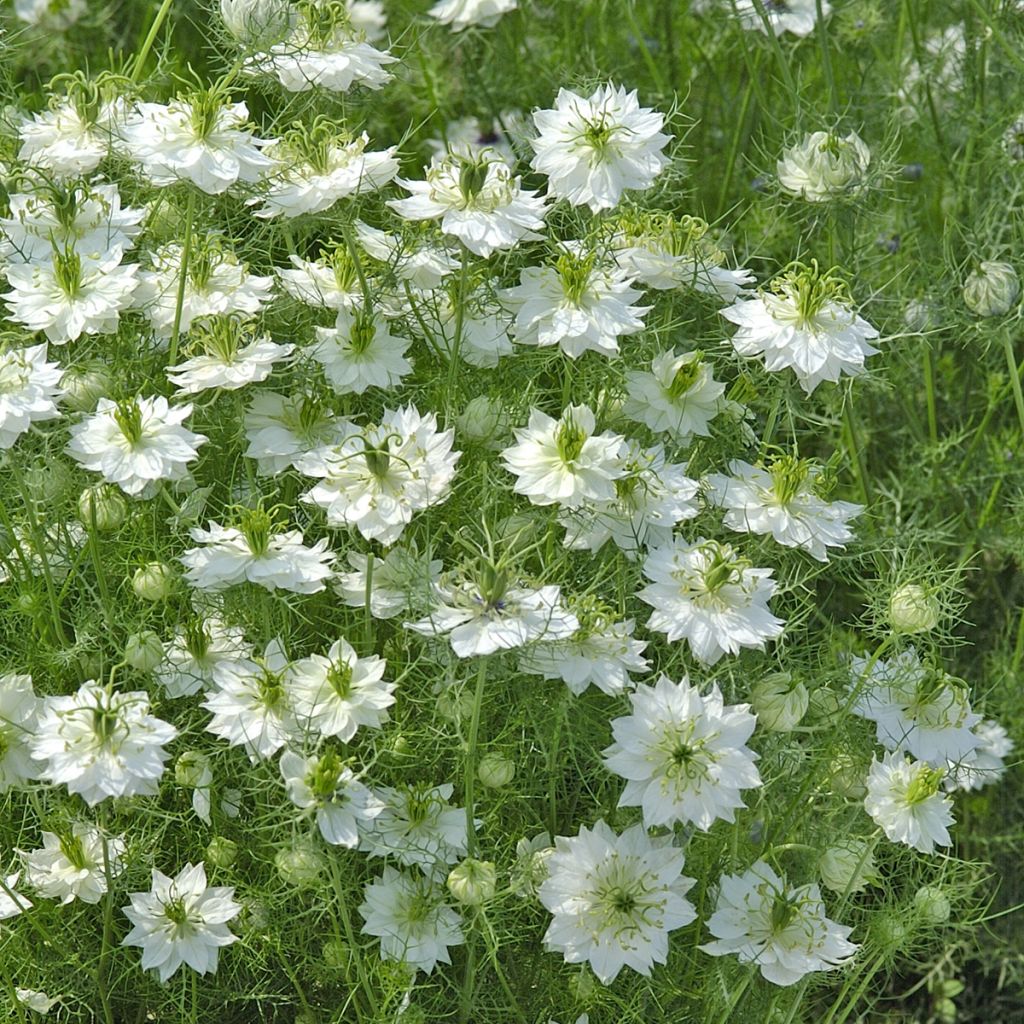

Nigella damascena White
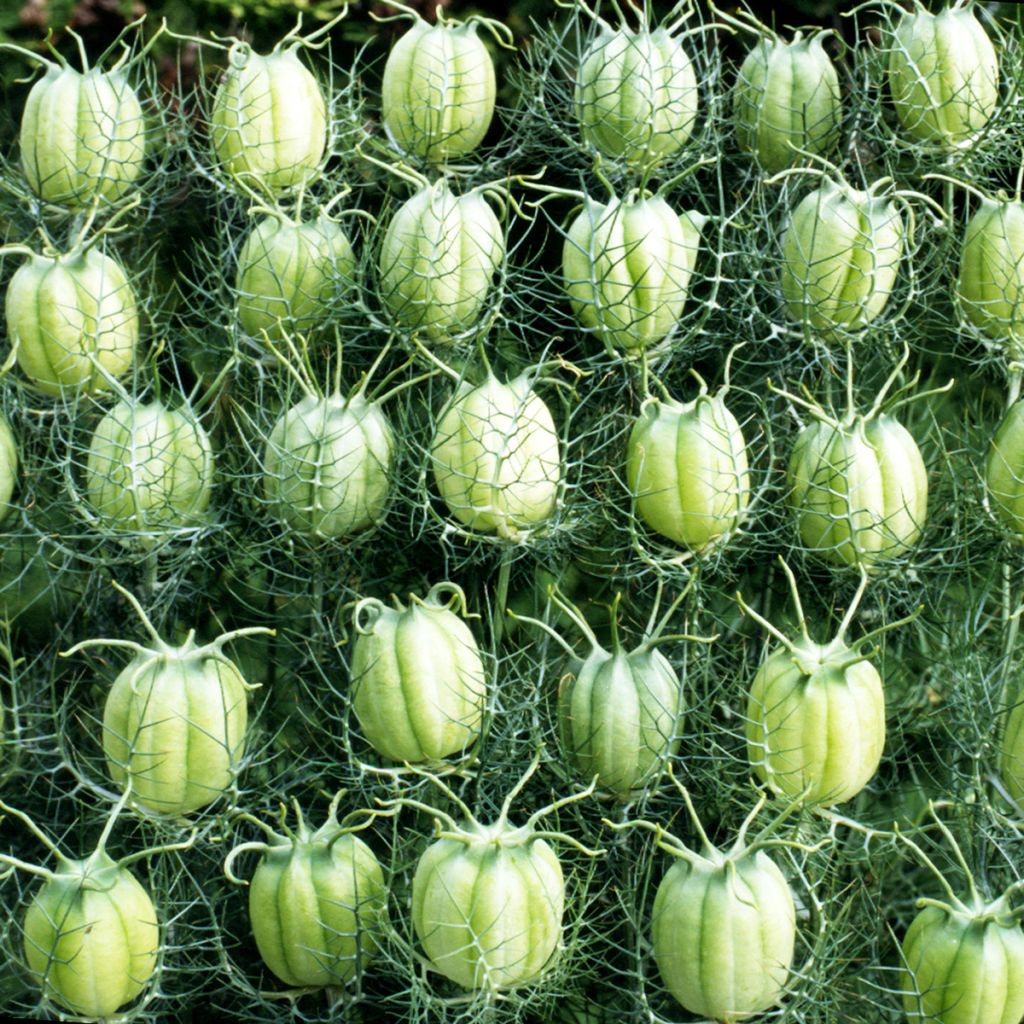

Nigella damascena White
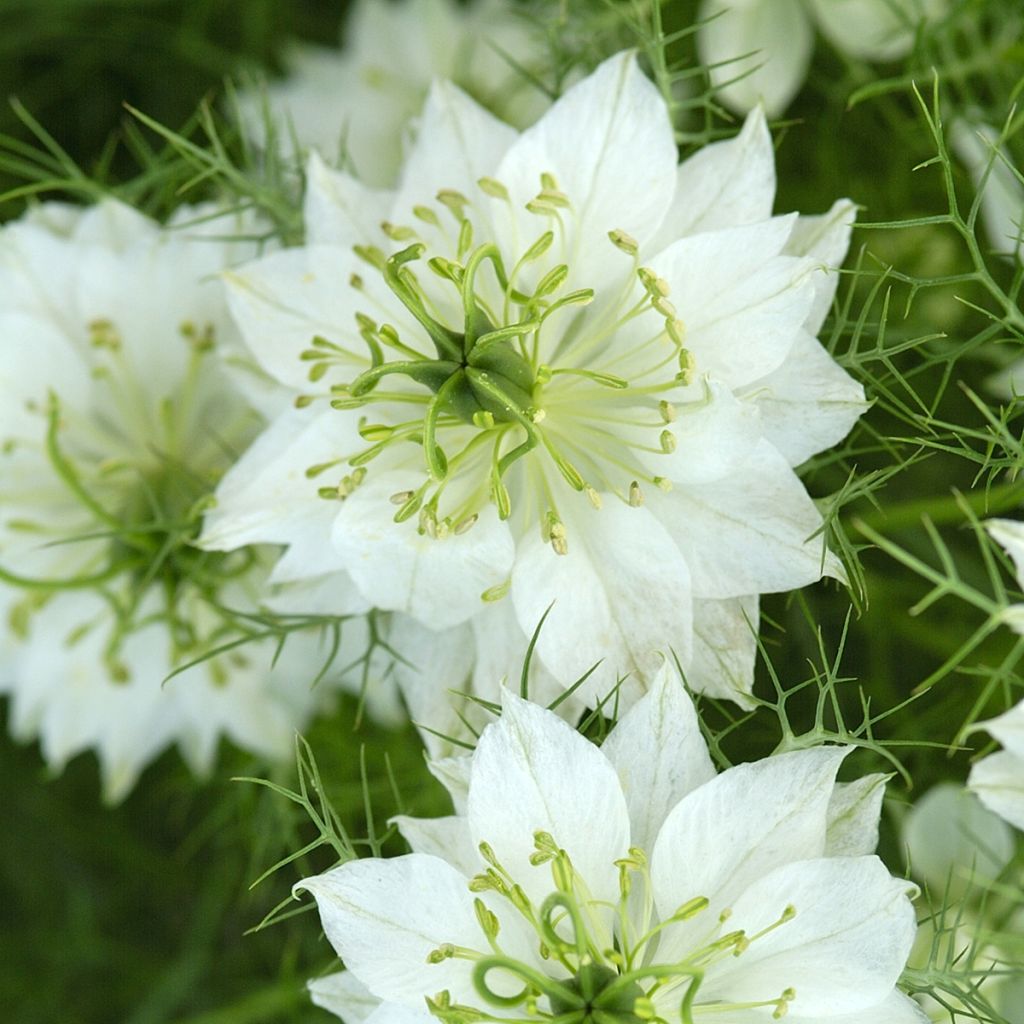

Nigella damascena White
Nigella damascena White
Nigella damascena Blanche à capsule verte
Love-in-a-mist, Devil in a bush, Ragged lady
This item cannot be shipped to the selected country
Dispatch by letter from €3.90
More information
Schedule delivery date,
and select date in basket
This plant carries a 6 months recovery warranty
More information
We guarantee the quality of our plants for a full growing cycle, and will replace at our expense any plant that fails to recover under normal climatic and planting conditions.
Seed-only orders are dispatched by sealed envelope. The delivery charge for seed-only orders is €3.90.
Does this plant fit my garden?
Set up your Plantfit profile →
Description
The 'White with Green Capsule' Nigella is a variety of Damascus Nigella, which produces a beautiful white flowering for several months, carried by an elegant green foliage as delicate as lace. This flowering then evolves into decorative green fruits, in the form of capsules adorned with fine filaments. They remain decorative for a long time and lighten up all floral compositions, both in the garden and in bouquets. You can sow this selection in spring or autumn, in mild climates, by staggering the sowings by 15 days to spread out the flowering. A simple and easy to grow annual!
Nigella damascena is an annual plant of the Ranunculaceae family, which includes many ornamental plants, such as Anemones, Delphinium (Larkspur) and the large group of Clematis, climbing or perennial. Native to the Mediterranean basin (North Africa, Turkey, Middle East), it grows in uncultivated, rocky areas, along paths, in the most barren lands. It is an annual plant, whose lifespan does not exceed a few months, but it self-seeds spontaneously and generously. Very hardy and fast-growing, this plant spends the winter as a seedling to form a beautiful tuft of feathery foliage in spring, like that of fennel.
Standing 50 to 60cm (20 to 24in) tall and about 30cm (12in) wide, this white variety with green capsule stands out for the green colouration of its fruits. Flowering takes place from May to August, depending on the sowing date. With a diameter of 3 to 4 cm (1 to 2in), its pure white flowers have 5 petaloid sepals and 5 or 10 nectariferous petals, giving them a rather airy appearance. The centre is occupied by 5 long green pistils, often with a curved tip, surrounded by yellow-green stamens. A lace collar seems to support the corolla, giving an overall graphic and decorative appearance. This melliferous flowering delights bees and other pollinators throughout the summer. At the end of flowering, the pistils unite in a capsule that remains green, surrounded by the lace collar that enhances their ornamental interest. These fruits, as original as they are decorative, contain a large number of small black seeds that germinate very easily in light soil. By picking the stems that bear them before the capsules open, you can simply hang them upside down to dry and make beautiful dried bouquets.
The Damascus Nigella is a perfect plant for our increasingly hot and dry summers. Easy to grow by sowing it in well-drained soil, it blends perfectly with most other plants, in rockeries, slopes or perennial beds. Its slightly wild appearance will also be perfect in a natural garden, focusing on botanical species rather than horticultural varieties. The vaporous foliage of the Nigella, intricately worked like lace, goes perfectly with large-leaved perennials that it will lighten up. Sow it alongside Stachys byzantina 'Big Ears', nicknamed Bear's Ear because of its velvety grey leaves that will enhance its white flowers. It will also be perfectly at home at the base of a botanical rose such as Rosa rugosa 'Rubra', with its dark green foliage and single flowers in a fuchsia pink illuminated by a golden stamen heart. You can also quickly create a rustic and colourful setting by mixing it with cosmos, poppies or annual poppies.
Report an error about the product description
Nigella damascena White in pictures


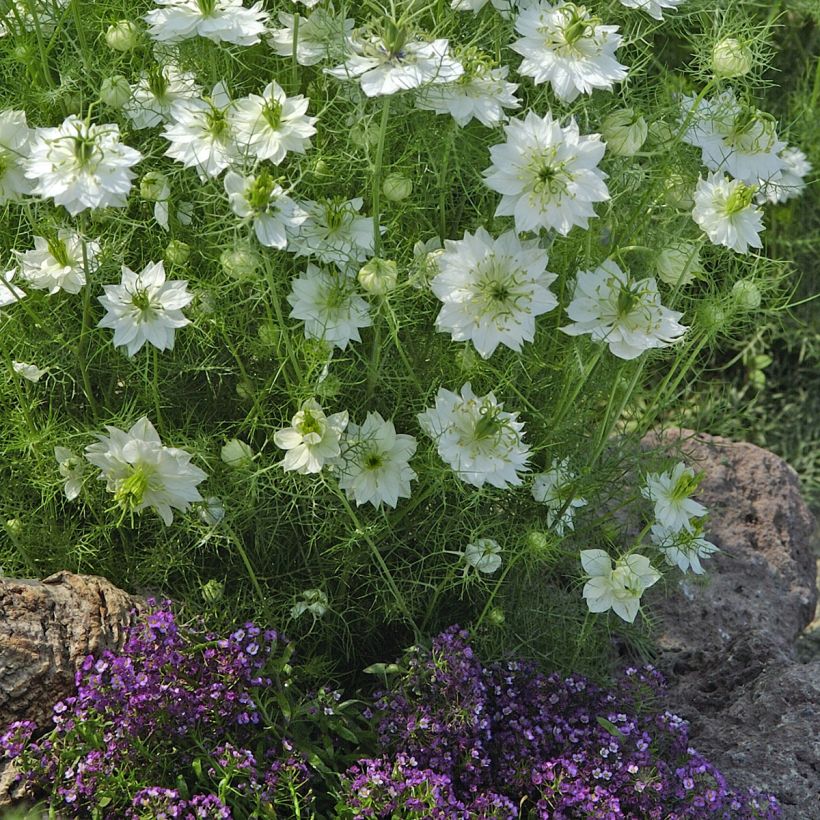

Flowering
Foliage
Plant habit
Botanical data
Nigella
damascena
Blanche à capsule verte
Ranunculaceae
Love-in-a-mist, Devil in a bush, Ragged lady
Cultivar or hybrid
Other Nigella -Love-in-a-mist seeds
Planting and care
Sowing White Damask Nigella with green capsules is a piece of cake. You can choose to sow in spring or late summer, as the seedlings are hardy and withstand winter without damage. Sow the seeds outdoors, directly in the ground. Prepare the soil well to loosen and lighten it before sowing. Sow in spaced rows of 30cm (12in), at a depth of 6mm (0.5in). You can create beautiful flower pots for spring by sowing the seeds in a cold greenhouse or veranda in late summer and autumn. Thin the sowing to leave only one plant every 20cm (8in). Damask Nigella love the sun and tolerate drought well, as they adapt their life cycle to climatic conditions, blooming early in regions with dry summers, and all summer in cooler climates. These plants self-sow very easily in the garden, but not always reliably.
Sowing period
Intended location
This item has not been reviewed yet - be the first to leave a review about it.
Flower seeds
Haven't found what you were looking for?
Hardiness is the lowest winter temperature a plant can endure without suffering serious damage or even dying. However, hardiness is affected by location (a sheltered area, such as a patio), protection (winter cover) and soil type (hardiness is improved by well-drained soil).

Photo Sharing Terms & Conditions
In order to encourage gardeners to interact and share their experiences, Promesse de fleurs offers various media enabling content to be uploaded onto its Site - in particular via the ‘Photo sharing’ module.
The User agrees to refrain from:
- Posting any content that is illegal, prejudicial, insulting, racist, inciteful to hatred, revisionist, contrary to public decency, that infringes on privacy or on the privacy rights of third parties, in particular the publicity rights of persons and goods, intellectual property rights, or the right to privacy.
- Submitting content on behalf of a third party;
- Impersonate the identity of a third party and/or publish any personal information about a third party;
In general, the User undertakes to refrain from any unethical behaviour.
All Content (in particular text, comments, files, images, photos, videos, creative works, etc.), which may be subject to property or intellectual property rights, image or other private rights, shall remain the property of the User, subject to the limited rights granted by the terms of the licence granted by Promesse de fleurs as stated below. Users are at liberty to publish or not to publish such Content on the Site, notably via the ‘Photo Sharing’ facility, and accept that this Content shall be made public and freely accessible, notably on the Internet.
Users further acknowledge, undertake to have ,and guarantee that they hold all necessary rights and permissions to publish such material on the Site, in particular with regard to the legislation in force pertaining to any privacy, property, intellectual property, image, or contractual rights, or rights of any other nature. By publishing such Content on the Site, Users acknowledge accepting full liability as publishers of the Content within the meaning of the law, and grant Promesse de fleurs, free of charge, an inclusive, worldwide licence for the said Content for the entire duration of its publication, including all reproduction, representation, up/downloading, displaying, performing, transmission, and storage rights.
Users also grant permission for their name to be linked to the Content and accept that this link may not always be made available.
By engaging in posting material, Users consent to their Content becoming automatically accessible on the Internet, in particular on other sites and/or blogs and/or web pages of the Promesse de fleurs site, including in particular social pages and the Promesse de fleurs catalogue.
Users may secure the removal of entrusted content free of charge by issuing a simple request via our contact form.
The flowering period indicated on our website applies to countries and regions located in USDA zone 8 (France, the United Kingdom, Ireland, the Netherlands, etc.)
It will vary according to where you live:
- In zones 9 to 10 (Italy, Spain, Greece, etc.), flowering will occur about 2 to 4 weeks earlier.
- In zones 6 to 7 (Germany, Poland, Slovenia, and lower mountainous regions), flowering will be delayed by 2 to 3 weeks.
- In zone 5 (Central Europe, Scandinavia), blooming will be delayed by 3 to 5 weeks.
In temperate climates, pruning of spring-flowering shrubs (forsythia, spireas, etc.) should be done just after flowering.
Pruning of summer-flowering shrubs (Indian Lilac, Perovskia, etc.) can be done in winter or spring.
In cold regions as well as with frost-sensitive plants, avoid pruning too early when severe frosts may still occur.
The planting period indicated on our website applies to countries and regions located in USDA zone 8 (France, United Kingdom, Ireland, Netherlands).
It will vary according to where you live:
- In Mediterranean zones (Marseille, Madrid, Milan, etc.), autumn and winter are the best planting periods.
- In continental zones (Strasbourg, Munich, Vienna, etc.), delay planting by 2 to 3 weeks in spring and bring it forward by 2 to 4 weeks in autumn.
- In mountainous regions (the Alps, Pyrenees, Carpathians, etc.), it is best to plant in late spring (May-June) or late summer (August-September).
The harvesting period indicated on our website applies to countries and regions in USDA zone 8 (France, England, Ireland, the Netherlands).
In colder areas (Scandinavia, Poland, Austria...) fruit and vegetable harvests are likely to be delayed by 3-4 weeks.
In warmer areas (Italy, Spain, Greece, etc.), harvesting will probably take place earlier, depending on weather conditions.
The sowing periods indicated on our website apply to countries and regions within USDA Zone 8 (France, UK, Ireland, Netherlands).
In colder areas (Scandinavia, Poland, Austria...), delay any outdoor sowing by 3-4 weeks, or sow under glass.
In warmer climes (Italy, Spain, Greece, etc.), bring outdoor sowing forward by a few weeks.

































